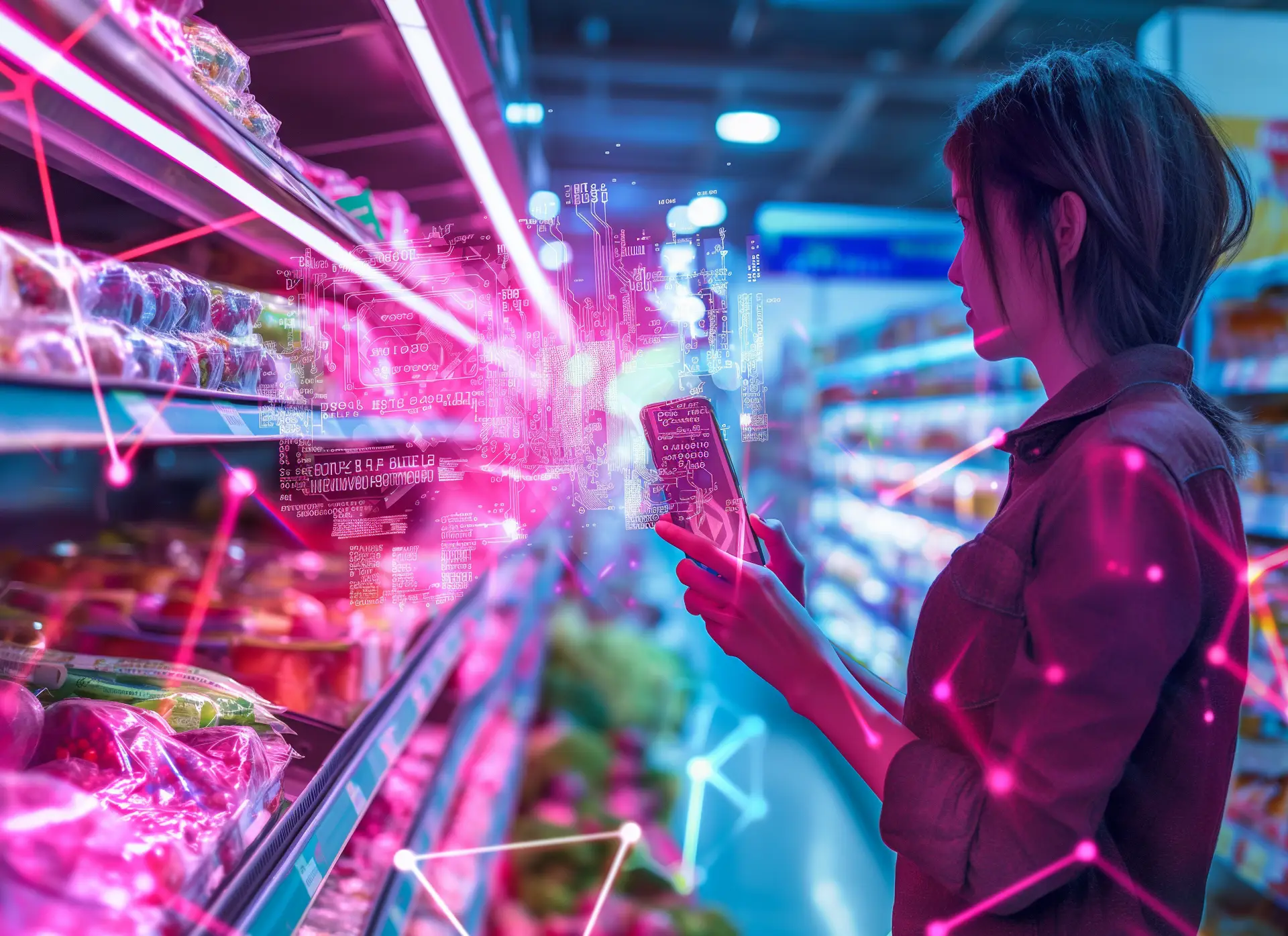In the realm of digital innovation, two technologies stand out for their transformative potential: the Internet of Things (IoT) and blockchain. IoT connects everyday devices to the internet, creating a vast network of smart data-sharing objects. Blockchain, known for its role in cryptocurrencies, offers a secure, decentralized method for recording and verifying transactions. The convergence of these technologies promises to enhance transparency, secure data sharing, and significantly improve data integrity, privacy, and operational efficiency across various industries. From healthcare and supply chain management to smart cities, this integration is paving the way for unprecedented advancements that address critical security, scalability, and interoperability challenges that have long hindered the full potential of connected systems.
The Promise of Connected Devices
The Internet of Things has already begun transforming our daily lives, making our world more responsive and efficient. From smart homes that adjust temperature and lighting based on our preferences to industrial sensors that predict equipment failures before they occur, IoT is creating an interconnected ecosystem of devices that ranges from simple sensors to complex machines.
The potential applications of IoT are boundless, spanning industries from healthcare and manufacturing to agriculture and urban planning. However, as IoT networks grow in size and complexity, they face significant challenges. Security concerns loom large, with each connected device potentially serving as an entry point for cyberattacks. The sheer volume of data generated by IoT devices poses scalability issues, and the need for more standardization among different IoT systems hinders interoperability. Addressing these challenges requires robust security measures, standardized protocols, and scalable solutions such as sharding and off-chain transactions.
Blockchain: Beyond Cryptocurrency
While blockchain has captured the world’s attention primarily by associating with cryptocurrencies like Bitcoin, its potential extends far beyond digital currencies. At its essence, blockchain is a decentralized ledger system that records transactions across a network of computers. Once data is recorded on a blockchain, it becomes challenging to change or tamper with, ensuring high data integrity and security.
The fundamental characteristics of blockchain – decentralization, immutability, transparency, and security – make it an ideal solution for many of the challenges IoT systems face.
A Powerful Synergy
The integration of blockchain with IoT creates a synergy greater than the sum of its parts. Blockchain’s decentralized nature enhances IoT security by ensuring that data transmitted between devices is encrypted and tamper-proof. This added layer of protection is crucial in industries like healthcare and finance, where data privacy and integrity are paramount.
Moreover, blockchain can serve as a universal protocol, enabling seamless communication and data exchange between disparate IoT systems. This improved interoperability allows for more cohesive and integrated operations across various platforms and devices, breaking down the silos that have long hindered the full potential of IoT.
The decentralized data management offered by blockchain addresses another critical weakness of traditional IoT systems: their reliance on centralized servers. By distributing data across a network of nodes, blockchain ensures continuous availability and resilience. Even if some nodes fail or are compromised, the system remains operational, significantly reducing the risk of catastrophic downtimes and data loss.
Transforming Industries
Integrating IoT and blockchain is not just a theoretical concept; it’s already beginning to transform various industries. In supply chain management, this powerful combination revolutionizes how goods are tracked and verified. IoT devices monitor the location and condition of products in real time, while blockchain ensures that this data is immutable and transparent. This reduces fraud, improves inventory management, and gives consumers unprecedented visibility into the origins and journey of their purchases.
The impact is equally profound in healthcare. IoT devices are increasingly used to monitor patient health, manage medical equipment, and track pharmaceuticals. When combined with blockchain, this system ensures that patient data is not only accurate and accessible but also secure and private. The result is improved patient care, streamlined operations, and reduced costs.
This technological convergence is also revolutionizing the concept of smart cities. IoT sensors manage everything from traffic flow to energy usage, while blockchain provides a secure and transparent platform for data sharing. This leads to more efficient urban management, reduced energy consumption, and enhanced public safety.
Even the automotive industry is not immune to this transformative wave. Combining IoT and blockchain will be crucial as we move towards a future of autonomous vehicles. IoT enables vehicles to communicate with each other and with road infrastructure. At the same time, blockchain ensures that these communications are secure and trustworthy, paving the way for safer and more efficient transportation systems.
Challenges on the Horizon
Despite its immense potential, integrating IoT and blockchain is challenging. Scalability remains a significant concern, particularly for public blockchain networks that may need help to handle the high volume of transactions generated by IoT devices. Solutions such as sharding, off-chain transactions, and adopting more efficient consensus mechanisms like proof-of-stake (PoS) are being explored to address these issues. These solutions aim to enhance the transaction throughput and reduce the latency of blockchain networks, but further innovation is needed.
Potential vulnerabilities in IoT devices raise security concerns, while the lack of standardization hinders interoperability between different IoT systems. Addressing these challenges requires the development of robust security protocols and establishing industry-wide standards for IoT-blockchain integration.
Energy consumption is another hurdle, especially for proof-of-work-based blockchain systems that require substantial computational power. As we move towards a more sustainable future, exploring energy-efficient consensus mechanisms like proof-of-stake will be crucial.
The regulatory landscape also presents challenges. As IoT and blockchain integration touches on sensitive areas like data privacy and financial transactions, navigating the complex and often inconsistent global regulatory environment will be essential for widespread adoption.
Moreover, the technical complexity of integrating these two cutting-edge technologies requires a high level of expertise. There’s a pressing need for professionals who understand IoT and blockchain and how they can work together effectively.
A Glimpse into the Future
As we look to the future, the potential of IoT and blockchain integration seems boundless. We can envision a world where our devices communicate seamlessly and do so with unprecedented security and efficiency. Based on real-time data from IoT devices, smart contracts could automate complex processes, from insurance claims to energy trading.
In healthcare, personalized treatment plans might be automatically adjusted based on patient data collected from wearable devices, with blockchain ensuring the privacy and integrity of this sensitive information. Supply chains could become so transparent and efficient that “out of stock” becomes obsolete, with production and distribution automatically adjusted based on real-time demand data.
Microgrids powered by renewable sources could transform the energy sector, with IoT devices managing energy flow and blockchain facilitating peer-to-peer energy trading. In agriculture, combining IoT sensors and blockchain could create completely transparent food supply chains, allowing consumers to trace their food safely from farm to table.
Conclusion: A New Technological Paradigm
The convergence of IoT and blockchain represents more than a technological advancement; it signifies a paradigm shift in how we interact with the digital and physical worlds. By addressing the critical challenges of security, scalability, and interoperability that have long held IoT back, blockchain is helping to unlock the full potential of our connected devices.
As these technologies evolve and mature, we can expect innovative solutions and applications that we can scarcely imagine today. The road ahead may be challenging, but the potential rewards – efficiency, security, and new capabilities – are immense.
The future shaped by IoT and blockchain integration promises to be smarter, more secure, and more connected than ever. As we stand on the brink of this new technological era, one thing is clear: the convergence of IoT and blockchain is not just transforming individual industries – it’s reshaping the very fabric of our digital world.
















